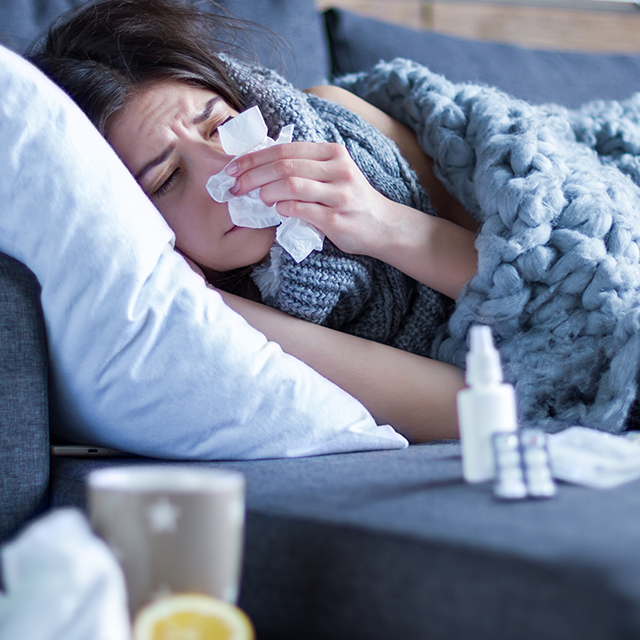Johns Hopkins experts say it’s vitally important to get vaccinated against influenza this year, as the coronavirus that causes COVID-19 continues to circulate in the community and there is concern about additional harm other viruses such as influenza could cause. For Johns Hopkins Medicine (JHM) employees who want to be vaccinated against both the flu and COVID-19, a vaccine clinic on the East Baltimore campus will offer both vaccines at the same time.
Flu vaccinations are taking place from Sept. 20–24 and Sept. 27–Oct. 1 at the Turner Concourse, and Nov. 1–5 in the Phipps Building’s Houck Lobby. At the Turner Concourse, JHM personnel can also get a COVID-19 vaccine. It is mandatory that JHM employees receive both vaccines unless they have an approved exception for medical or religious reasons. Appointments must be made through MyChart for both vaccinations in order for the clinics to maintain physical distancing. Information for clinics at other JHM member organizations can be found here.
“This year, it’s more important than ever to get your influenza vaccination to help protect you against influenza viruses and to get the COVID-19 vaccine,” says Lisa Maragakis, senior director of health care epidemiology and infection prevention at the Johns Hopkins Health System.
Employees can also get their flu vaccine at Walgreens pharmacies, for free, by presenting a voucher and Johns Hopkins ID. Employees then need to upload proof of vaccination to the vaccine management system.
The flu vaccine is given each year to help protect against sickness from influenza viruses that cause the flu that are likely to circulate during the respiratory virus season, which typically runs Oct. 15 to May 15, Maragakis says.
“Additionally, this year, we are concerned that influenza and other respiratory viruses will cocirculate along with SARS-CoV-2, which causes COVID-19,” she says. “This threatens to further burden the population with respiratory illness and further stress the health care system at a time when many hospitals and clinics are already beyond capacity caring for patients with COVID-19.”
It is safe to receive both a flu vaccine and a COVID-19 vaccine during one appointment. Although the Centers for Disease Control and Prevention initially recommended allowing two weeks between the COVID-19 vaccine and other vaccines, it now says it’s safe to receive the flu vaccine and COVID-19 vaccine at the same time.
The deadline for employees to receive their flu vaccine is Nov. 19. Requests for medical or religious exceptions must be submitted by Nov. 9. Personnel who are not yet vaccinated against COVID-19 and do not have an approved exception must receive their first of two shots of the Moderna or Pfizer vaccine or a single Johnson & Johnson shot by Oct. 1.
This flu season has the potential to be more severe than previous seasons, says Johns Hopkins epidemiologist Eili Klein. Because the 2020–21 flu season was mild, the population is less immune to flu strains.
“I think that there is a significant risk to flu causing high morbidity and mortality this year,” Klein says.
He predicts that COVID-19 cases will wane later in the fall, and people will gradually be able to return to more normal activities as they did this summer. For the upcoming respiratory virus season, there is a high risk of flu spread due to limited immunity and the possibility of flu vaccine mismatch with circulating strains — flu vaccines are based on strains that have recently circulated, and a mild previous flu season provides fewer samples to draw from.
Because transmission of the viruses that cause the flu is closely associated with children, school mask mandates should help curb its spread, Klein says. However, if COVID-19 cases fall, rescinding such requirements could lead to increased transmission of influenza viruses and other pathogens such as respiratory syncytial virus (RSV).
Wearing masks, hand-washing and physical distancing can reduce the spread of respiratory viruses, including those responsible for COVID-19 and the flu.
“To help avoid spreading diseases such as flu and RSV, schools could use targeted interventions for a couple of weeks at a time at the first sign of infection,” Klein says. “This might mitigate the spread of disease without wholesale closure of the school or wider impacts on the community, such as closing businesses.”
Read more about flu prevention during the COVID-19 pandemic.


